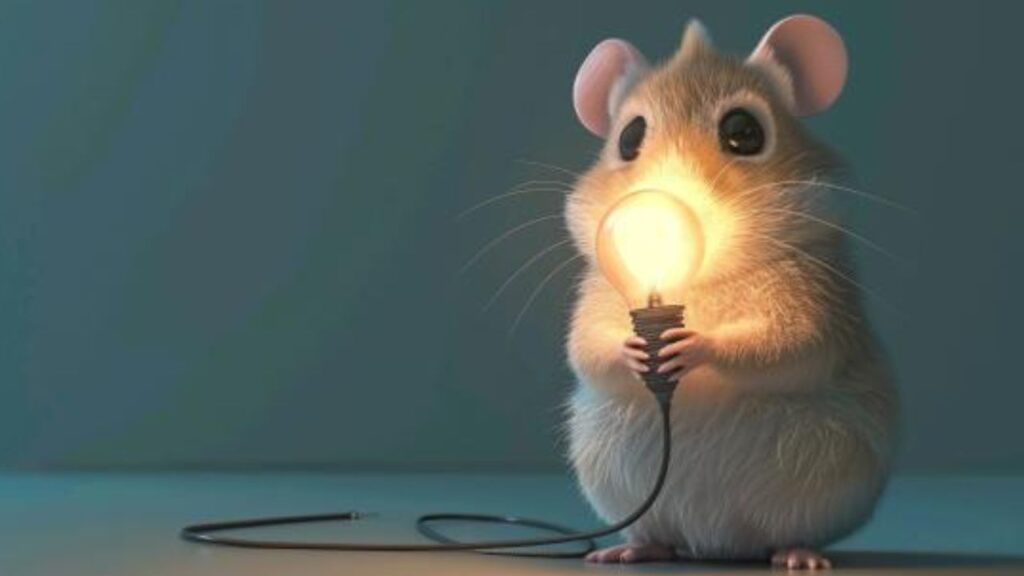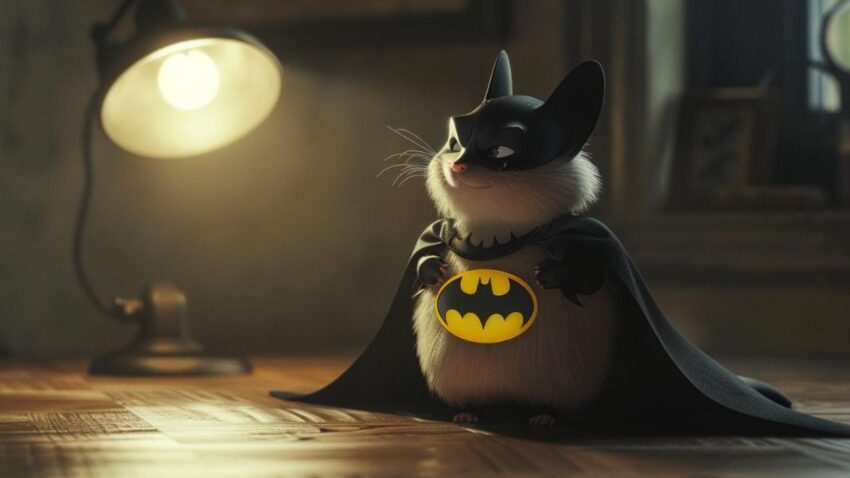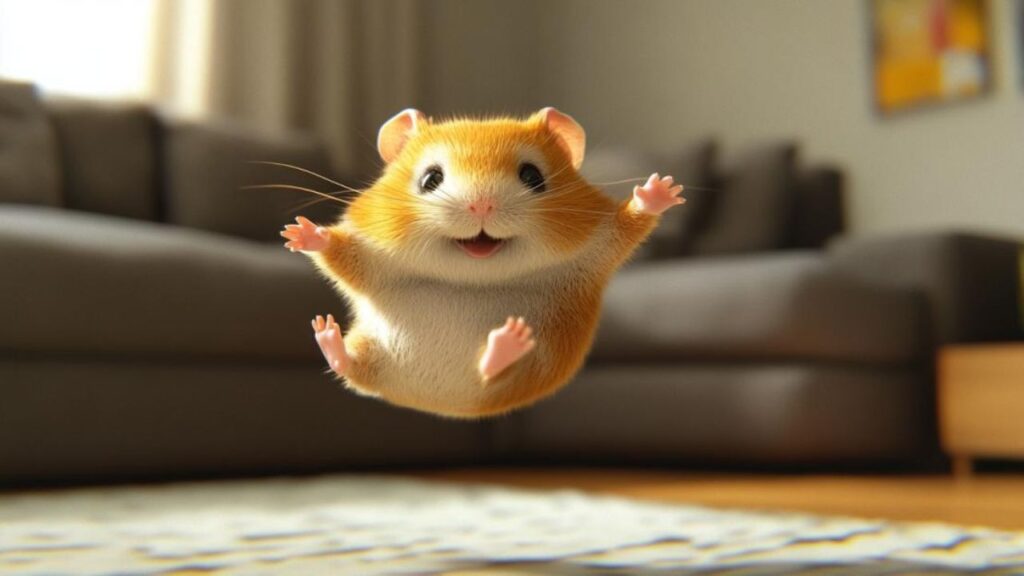Welcome, fellow hamster enthusiasts, to a fascinating exploration of deepening our communication with our tiny, furry friends through the magic of light signal training. Training your hamster offers a myriad of benefits, from enhancing mental stimulation to strengthening the bond between you and your pet. Among the various methods available, using light signals for communication stands out as a unique and effective approach, tapping into the natural responsiveness of hamsters to visual cues.
The Brilliance of Light Signals
Light signal training stands out in the realm of pet training, offering a distinct and engaging way to interact with your hamster. This method capitalizes on the natural attentiveness of hamsters to visual stimuli, allowing for clear and concise communication. The advantage of using light signals lies in their ability to grab your hamster’s focus, cutting through the distractions of their environment and providing a clear cue for action.
Conditioning: The Key to Comprehension
At the heart of light signal training lies the principle of conditioning—a technique rooted in behavioral science that involves linking a specific stimulus (in this case, a light signal) to a desired response. Through consistent training sessions, your hamster can learn to associate the illumination of a light with a particular behavior, such as coming when called or performing an adorable trick. This process not only stimulates your hamster’s brain but also fosters a deeper level of understanding and interaction between you both.
As we venture further into the nuances of light signal training, we’ll uncover the steps to effectively introduce this method to your hamster, from choosing the appropriate light source to building positive associations and reinforcing desired behaviors. This guide promises to equip you with the knowledge and tools needed to embark on a rewarding training adventure, filled with light and learning.
Understanding Hamster Perception

Diving into the world of hamster training requires a fundamental understanding of how these charming little creatures perceive their environment. This knowledge not only enhances the training process but also ensures it’s adapted to their specific needs and capabilities. Let’s explore the visual acuity of hamsters and the basics of conditioning, providing a solid foundation for effective light signal training.
Visual Acuity in Hamsters
Hamsters, while not possessing the sharp visual acuity of predators, have a unique way of perceiving the world that is perfectly adapted to their nocturnal lifestyle. Their vision is geared more towards detecting movement and navigating in low light rather than discerning fine details. This means that while hamsters might not see the intricacies of a light signal, they are very responsive to changes in light intensity and movement, making light signals an effective way to capture their attention and communicate.
Responding to Visual Cues
The key to utilizing light signals in training is understanding that hamsters can detect and respond to changes in lighting and movement. By introducing a specific light signal as a consistent cue, you can tap into their natural ability to notice and react to these changes. The effectiveness of light signals with hamsters lies in their simplicity and contrast to the surrounding environment, making it a clear and distinguishable signal for them to follow.
Conditioning Basics
Conditioning is a powerful tool in animal training, allowing us to shape behavior through association and reinforcement. For hamsters, positive reinforcement—rewarding desired behaviors to encourage their repetition—is the most effective approach.
Positive Reinforcement
The essence of conditioning with positive reinforcement involves presenting a reward immediately after the desired behavior is performed, thereby increasing the likelihood of the behavior being repeated. In the context of light signal training, this means rewarding your hamster with a treat, gentle petting, or verbal praise immediately after they respond correctly to the light signal. Over time, the hamster begins to associate the light signal with positive outcomes, motivating them to respond consistently.
Tailoring to Hamster Capabilities
When applying conditioning principles to hamster training, it’s important to tailor your approach to their specific capabilities and preferences. This includes:
- Choosing rewards that are highly valued by your hamster, such as their favorite treat.
- Keeping training sessions short and engaging to match their attention span and energy levels.
- Being consistent with signals and rewards to help solidify the association between the light signal and the desired behavior.
Understanding hamster perception and the basics of conditioning provides a strong foundation for effective and enjoyable training sessions. By adapting light signal training to the visual and behavioral capabilities of hamsters, we create a communication bridge that enhances not just their learning experience but also our bond with them. Armed with this knowledge, we’re ready to embark on a journey of discovery and connection, illuminating the path with each successful training session.
Setting Up for Success

Embarking on the journey of light signal training with your hamster promises to be a rewarding experience, but success hinges on thoughtful preparation. The right setup can make all the difference, from selecting an appropriate light signal to creating a positive association with it. Let’s navigate through these initial steps, ensuring a smooth start to your training adventure.
Choosing the Right Light
The choice of light plays a pivotal role in the effectiveness of your training sessions. It’s crucial to find a balance between a light that’s noticeable for your hamster and one that’s safe and not overwhelming. Here are some tips to guide you in selecting the perfect light signal:
- Brightness and Safety: Opt for a light that is bright enough to catch your hamster’s attention without being so intense that it startles or discomforts them. LED lights, especially those with adjustable brightness, can be a great choice, allowing you to find the perfect level of intensity.
- Color Considerations: Hamsters may not see colors as humans do, but they can detect light in the blue and green spectrum better. A light source within this range can be more noticeable to them, making it an effective choice for a signal.
- Consistency is Key: Use the same light source and color for your training sessions. Consistency helps your hamster understand that this specific light is a cue, aiding in quicker association and response.
- Size and Portability: Consider a light source that’s easy to manage and can be directed towards the area of focus during training. Handheld LED lights or small flashlights often work well for this purpose.
Creating a Positive Association
Once you’ve selected the right light, the next step is to build a positive association between the light signal and a rewarding outcome. This process is crucial for motivating your hamster to respond to the light during training. Here’s how to create this beneficial link:
- Introduce the Light Gradually: Start by simply turning on the light near your hamster without expecting any specific reaction. The goal is to let them notice the light without it being tied to any task.
- Pair with Treats: Once your hamster notices the light, immediately offer a treat. The sequence is important: light on, then treat. This sequence helps your hamster make the connection between the light and positive experiences.
- Incorporate into Playtime: Along with treats, you can use the light signal to signify the start of playtime or other enjoyable activities. Turn on the light just before a fun activity, reinforcing the light as a precursor to something good.
- Repeat and Reinforce: Consistency in this phase is crucial. Repeatedly associating the light with positive outcomes solidifies the connection in your hamster’s mind. Over time, the mere activation of the light will elicit a positive expectation, laying the groundwork for more complex training.
Setting up for success in light signal training involves careful consideration and preparation, from the selection of the light to the creation of positive associations. By ensuring the light signal is both safe and noticeable for your hamster, and by linking it to enjoyable outcomes, you’re setting the stage for a fulfilling training experience. With these foundations in place, you and your hamster are well on your way to developing a dynamic new way to communicate and bond.
Introduction to the Light Signal

The initial introduction of the light signal is a crucial step that sets the tone for future training. It’s important to approach this phase with patience and positivity to ensure your hamster associates the light with good experiences.
- Familiarize in a Relaxed Setting: Begin by integrating the light signal into your hamster’s environment without any expectations. Turn on the light briefly during times when you are calmly interacting with your hamster, ensuring the setting is peaceful and stress-free.
- Observe and Adjust: Pay close attention to your hamster’s reaction to the light. If they seem startled or uncomfortable, adjust the brightness or distance of the light. The goal is to make the light noticeable without causing any distress.
- Associate with Positivity: Pair the light signal with positive reinforcements, such as offering a treat or soft verbal praise. This early association helps your hamster connect the light with pleasant outcomes.
From Recognition to Response
Once your hamster shows comfort and interest in the light signal, it’s time to move from mere recognition to an active response. This stage involves gradual conditioning, where your hamster learns to associate the light signal with specific actions.
- Start with Simple Reactions: Initially, look for any natural curiosity or movement towards the light as a reason to offer a reward. Even a small step in the right direction should be celebrated with a treat.
- Increase Expectations Gradually: As your hamster becomes more responsive, start to increase what you expect for a reward. For instance, if the initial reaction was merely looking at the light, you might now look for them to move towards it.
- Introduce Commands: Pair the light signal with simple verbal commands or gestures. For example, you might flash the light while gently saying “come” to encourage your hamster to move towards you or the light.
- Practice Makes Perfect: Regular, short training sessions are more effective than less frequent, longer ones. Aim for brief but consistent practice times, gradually increasing the complexity of the response you expect in connection with the light.
Reinforcement and Consistency
The key to solidifying your hamster’s training is consistent reinforcement. This means regularly acknowledging and rewarding desired behaviors to encourage their repetition.
- Immediate Rewards: Always have treats on hand to immediately reward your hamster’s correct responses to the light signal. Timely rewards reinforce the connection between the action and the positive outcome.
- Keep It Interesting: Vary the types of rewards to keep your hamster engaged. Alongside treats, use affection, playtime, or access to favorite toys as rewards.
- Consistent Cues: Use the light signal consistently, ensuring that it remains distinct and recognizable to your hamster. Avoid using similar lighting in other contexts that might confuse the training process.
- Patience and Persistence: Remember that progress may come in small increments and that patience is your greatest ally. Celebrate every step forward and maintain a positive, encouraging attitude throughout the training.
By following these detailed training steps—introducing the light signal gently, guiding your hamster from recognition to response, and emphasizing reinforcement and consistency—you’ll cultivate a unique and rewarding way to communicate with your hamster. This journey not only teaches your hamster a new skill but also deepens the trust and bond you share, lighting up the path to a harmonious and joyful relationship.
Hannah’s Training Tactics

Embarking on the adventure of light signal training with your hamster can be a delightful journey, but like all good things, it may come with its hurdles. Fear not, for with a sprinkle of creativity and a dash of patience, most challenges can be overcome. Here are some of Hannah’s top training tactics for troubleshooting common issues, along with some fun DIY light signal training tools to enrich your training sessions.
Troubleshooting Common Challenges
1. Lack of Interest in the Light
- Bright Idea: Ensure the light is noticeable but not intimidating. If your hamster seems uninterested, try changing the color or brightness. Sometimes, a slight adjustment can spark curiosity.
- Mix It Up: Incorporate the light signal into playtime or while offering treats to build positive associations without the pressure of formal training.
2. Overexcitement or Stress
- Slow and Steady: If the light causes overexcitement or stress, reduce the intensity or duration of exposure. Gradually reintroduce the light in shorter sessions, always paired with calm, positive interactions.
- Comfort Zone: Make sure the training area is quiet and familiar to reduce potential stress. A comfortable hamster is more receptive to learning.
3. Difficulty in Understanding the Connection
- Consistency is Key: Use the light signal consistently before a specific action, like feeding or cuddling. Repetition helps reinforce the connection between the light and the expected behavior.
- Reward Instantly: Immediate rewards after responding to the light signal can help solidify the link between action and reward. Timing is crucial for clarity.
DIY Light Signal Training Tools
Creating your own training tools can add an extra layer of fun and effectiveness to your sessions. Here are a couple of simple ideas to get you started:
1. Homemade Light Wand
- Materials Needed: A small flashlight, colorful transparent paper (like cellophane), and tape.
- Assembly: Wrap the flashlight with your chosen colored paper to alter the light’s color, securing it with tape. This customized light wand can make the light signal more intriguing to your hamster and help differentiate training sessions from regular room lighting.
2. Light Box Maze
- Materials Needed: A cardboard box, small LED lights (battery-operated), and clear plastic cups.
- Assembly: Cut holes in the box big enough to snugly fit the plastic cups. Place LED lights under some cups and use them as checkpoints in a maze. Guide your hamster through the maze using the lighted checkpoints as goals, rewarding them for reaching each point. This not only trains them to respond to light cues but also provides mental and physical stimulation.
Training your hamster to respond to light signals can transform routine interactions into engaging communication sessions. By addressing challenges with patience and integrating homemade training tools, you can enrich the experience for both you and your hamster. Remember, every hamster is unique, so feel free to adapt these strategies to best suit your furry friend’s personality and preferences.
Final Thoughts

As we draw the curtains on our journey through the illuminating path of light signal training with our hamsters, it’s important to reflect on the strides we’ve made and the unique bond it has allowed us to foster with our furry companions. Training your hamster to respond to light signals is not just about teaching them a new trick; it’s about enhancing communication, enriching their daily lives, and deepening the connection you share.
The Gleaming Benefits
The advantages of integrating light signal training into your hamster’s routine are multifaceted. This form of training taps into their natural curiosity and intelligence, providing them with the mental stimulation they need to thrive. It introduces a fun and interactive element to your relationship, transforming routine care into an opportunity for engagement and bonding. Moreover, the clarity and consistency of light signals offer a way to communicate that transcends the barriers between species, fostering a sense of trust and understanding that is truly special.
The Joy of Growth
Witnessing your hamster’s progress as they learn to respond to light signals is a rewarding experience that brings a sense of accomplishment and joy. Each successful interaction is a step forward in your shared journey, a testament to the patience and effort invested in their training. It’s a process that not only teaches them about the world around them but also teaches us about the depth of their capabilities and the strength of our bond.
A Beacon of Patience
Patience is the beacon that guides us through the training process. It reminds us that progress takes time and that each hamster will learn at their own pace. Celebrate the small victories, whether it’s a moment of recognition, a tentative step towards the light, or the first successful command followed. These moments are the building blocks of your hamster’s understanding and confidence, and they are worth every bit of effort.
As you continue to explore the possibilities of light signal training, remember that the journey is as important as the destination. The time spent training is an investment in your relationship, an opportunity to create lasting memories and a language of light that is uniquely yours.
“With paws and patience, you’re on the road to being a Hamster Whisperer. Happy training!”




